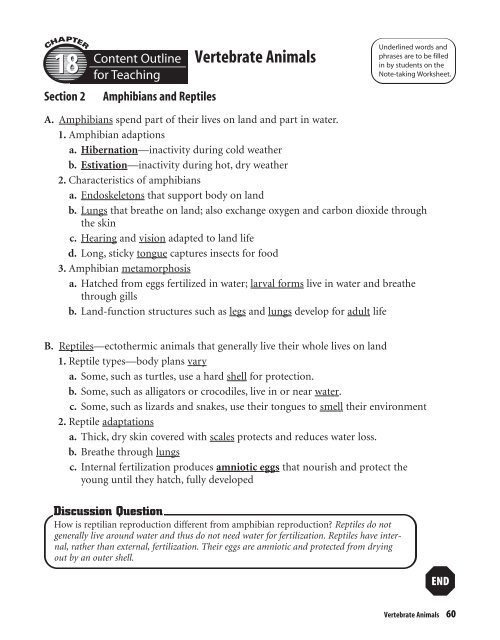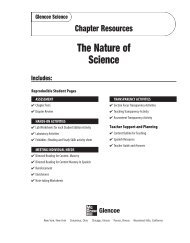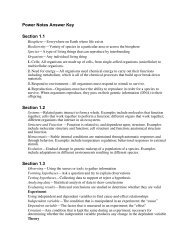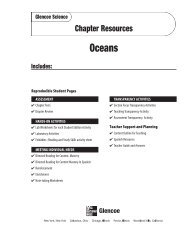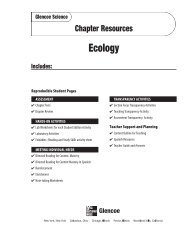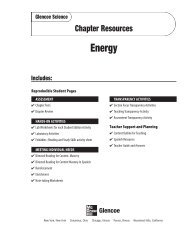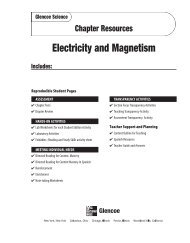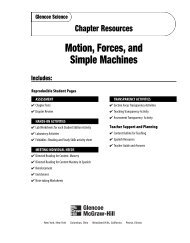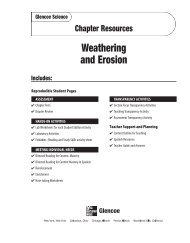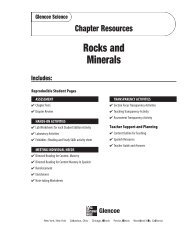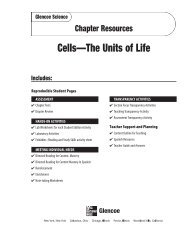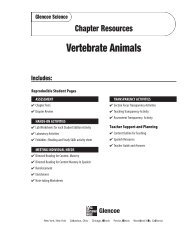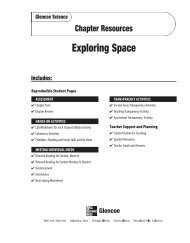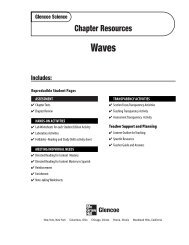Content Outline for Teaching - Potosi School District - Home
Content Outline for Teaching - Potosi School District - Home
Content Outline for Teaching - Potosi School District - Home
You also want an ePaper? Increase the reach of your titles
YUMPU automatically turns print PDFs into web optimized ePapers that Google loves.
18<br />
Section 2<br />
<strong>Content</strong> <strong>Outline</strong><br />
<strong>for</strong> <strong>Teaching</strong><br />
Amphibians and Reptiles<br />
Vertebrate Animals<br />
Underlined words and<br />
phrases are to be filled<br />
in by students on the<br />
Note-taking Worksheet.<br />
A. Amphibians spend part of their lives on land and part in water.<br />
1. Amphibian adaptions<br />
a. Hibernation—inactivity during cold weather<br />
b. Estivation—inactivity during hot, dry weather<br />
2. Characteristics of amphibians<br />
a. Endoskeletons that support body on land<br />
b. Lungs that breathe on land; also exchange oxygen and carbon dioxide through<br />
the skin<br />
c. Hearing and vision adapted to land life<br />
d. Long, sticky tongue captures insects <strong>for</strong> food<br />
3. Amphibian metamorphosis<br />
a. Hatched from eggs fertilized in water; larval <strong>for</strong>ms live in water and breathe<br />
through gills<br />
b. Land-function structures such as legs and lungs develop <strong>for</strong> adult life<br />
B. Reptiles—ectothermic animals that generally live their whole lives on land<br />
1. Reptile types—body plans vary<br />
a. Some, such as turtles, use a hard shell <strong>for</strong> protection.<br />
b. Some, such as alligators or crocodiles, live in or near water.<br />
c. Some, such as lizards and snakes, use their tongues to smell their environment<br />
2. Reptile adaptations<br />
a. Thick, dry skin covered with scales protects and reduces water loss.<br />
b. Breathe through lungs<br />
c. Internal fertilization produces amniotic eggs that nourish and protect the<br />
young until they hatch, fully developed<br />
Discussion Question<br />
How is reptilian reproduction different from amphibian reproduction? Reptiles do not<br />
generally live around water and thus do not need water <strong>for</strong> fertilization. Reptiles have internal,<br />
rather than external, fertilization. Their eggs are amniotic and protected from drying<br />
out by an outer shell.<br />
Vertebrate Animals 60


